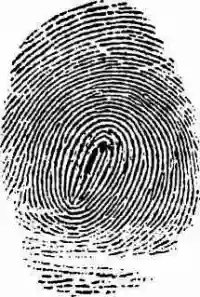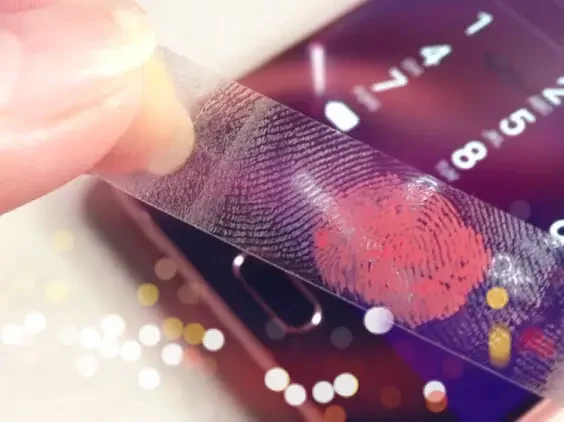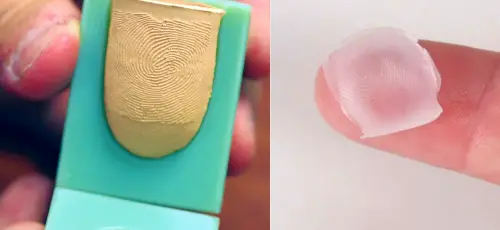Fingerprint. For over a century, the fingerprint has been the “gold standard” of identification. In the hallowed halls of forensic science and the dramatic plots of primetime crime shows.
It’s presented as the irrefutable, unique marker of an individual a biological signature that simply cannot lie. We were taught that no two are alike, that they’re our permanent, personal bar code.
This deeply ingrained belief in their infallibility is precisely why fingerprints transitioned from the crime lab to our daily lives. Today, your unique ridge pattern unlocks your smartphone, authenticates your bank payments, and grants you access to your most sensitive data.
Fingerprint and your biometric.
But as technology has woven this biometric “key” into the fabric of our digital world, an uncomfortable question has emerged: What if the gold standard is… flawed?
With biometric sensors becoming ubiquitous and the internet awash with DIY instructions and high-resolution 3D printers, the unforgeable fingerprint is proving to be more of a myth than a reality.
This doesn’t mean your fingerprint data is as easy to copy as taking a screenshot, but it does mean your fingers are no longer the invulnerable fortress you might have thought.
Let’s investigate the unsettling world of fingerprint forgery. How exactly is it done, what are the real-world risks to you personally, and what practical steps can you take to protect yourself?
The Anatomy of a Fake.
How Fingerprints Are Copied.
Stealing a fingerprint isn’t a simple matter of lifting a smudge with sticky tape, despite what old spy movies might suggest. That tape-lift only captures a 2D image.
To fool a modern scanner, a criminal needs to create a three-dimensional, functional copy of your finger.
There are two primary pathways to achieving this: the “hands-on” method and the “high-tech” method.
The Direct Lift (Physical Access Required).
This is the classic approach, favored for its relative simplicity, though it still requires skill and patience. It relies on one crucial element: your carelessness.
The attacker needs a clean, latent print left behind on a non-porous surface. Think of the items you touch every day without a second thought: a glass at a restaurant, the glossy surface of a smartphone screen, a polished door handle, or a shared piece of equipment.
1. Visualization: The attacker first dusts the latent print with fine powder (like forensic investigators) or exposes it to superglue fumes (cyanoacrylate fuming) to make the hidden ridges visible and stable.
2. Creating the Mold: Instead of tape, the attacker applies a pliable material to “lift” the 3D structure. Common, low-cost options include silicone putty, gelatin, or even common wood glue. Once the material sets, it is carefully peeled away, creating a perfect negative mold of your fingerprint.
3. Casting the “Finger”: This mold is then filled with a material that can mimic the properties of human skin, such as silicone, latex, or a ballistic gel. Once cured, the attacker has a flexible, 3D replica of your fingertip, complete with every unique ridge and valley.
This method’s weakness is its reliance on physical access. The criminal needs to be near you, identify a surface you’ve touched, and have the time to perform the lift without being noticed.
The Digital Reconstruction (The “Remote” Threat).
This is where fingerprint forgery enters the realm of science fiction. This method doesn’t require a physical print, only a high-resolution photograph of your finger.
The most famous (and alarming) demonstration of this came in 2014. The Chaos Computer Club (CCC), a well-known European hacker group, announced they had successfully cloned the fingerprint of Germany’s Defense Minister, Ursula von der Leyen.
Their source?
Not a stolen glass, but several high-resolution press photos of her hands, taken from different angles during a public speech.
The process is more complex but deeply concerning:
1. Image Sourcing: An attacker obtains a clear, high-resolution image of the target’s fingers. In an age of social media, selfies, and high-definition press conferences, these images are plentiful. (This is why security experts now warn celebrities and politicians against making the “peace” sign in photos).
2. Digital Enhancement: The photos are loaded into image-editing software. The attacker isolates the fingerprint, enhances the contrast, and “flattens” the perspective to create a clean, accurate 2D map of the print.
3. Creating the 3D Model: This 2D image is then inverted and processed by software to create a 3D digital model, which is then sent to a high-resolution 3D printer or a laser etcher to carve the print into a physical mold.
4. Casting: As with the direct method, this mold is then used to cast a fake finger using skin-like, conductive materials.
This method is far more terrifying because it can be executed from miles away, requiring no physical contact with the victim whatsoever.
The “Liveness” Problem.
Making a Dead Print Breathe.
You might be thinking, “Surely my smartphone is smart enough to know it’s not a real finger?” You’re correct. Modern sensors have a significant line of defense: “liveness detection.”
The Scotch tape myth fails because early scanners were optical. They were tiny cameras that simply took a picture of your print and matched the 2D pattern. These are incredibly easy to fool with just a high-resolution photo or a simple gummy-bear-like cast.
However, the smartphone in your pocket almost certainly uses a capacitive scanner.
Capacitive scanners don’t take a picture; they measure electricity. Your skin is naturally conductive. The scanner sends out a tiny electrical charge, and the ridges of your finger (which are in contact with the sensor) register a change in capacitance, while the valleys (which are not) do not. This creates a highly detailed electrical map of your print.
A simple silicone or glue replica is not conductive. If you press it on the sensor, nothing happens. It’s “dead.”
This is where the criminal must “enliven” the fake print, as the source text puts it. They must find a way to mimic the conductivity, temperature, and moisture of a living finger.
• Conductivity: The simplest way is to coat the fake print in a thin layer of moisture—literally, just breathing on it can be enough for a few attempts. More sophisticated attackers embed conductive materials (like graphite) into the silicone mix itself, creating a finger that is always “live.”
• Temperature & Moisture: Some sensors also have basic temperature checks. A cold piece of silicone might be rejected. This, again, can be defeated by the attacker simply warming the fake finger in their hand or pocket.
A third, newer type of sensor is ultrasonic. Used in some high-end devices (like certain Samsung models), these scanners emit sound waves that bounce off the finger, creating a true 3D map of not just the ridges but also the sub-dermal structures and, in some cases, even detecting blood flow.
These are by far the most difficult to fool, but even they have been beaten by researchers using incredibly detailed 3D-printed models.
The Real-World Risk.
Should You Actually Worry?
So, we’ve established it’s possible. But is it practical? Can a criminal really unlock your life with a fake finger?
The answer is nuanced and depends on the scenario.
Scenario 1: Unlocking Your Smartphone.
This is the most likely goal. A targeted attack by someone with resources a corporate spy, a determined stalker, or law enforcement could absolutely succeed, especially if you have an older or budget-range device with a less-sophisticated sensor.
High-end phones from Apple, Google, and Samsung are much, much harder to fool, but not impossible.
For the average street thief who snatches your phone? The risk is almost zero. They do not have the time, skill, or resources to lift your print, create a mold, and craft a conductive replica.
They will opt for the simpler method: trying to guess your PIN or simply wiping the device to sell it for parts.
Scenario 2: Framing You for a Crime.
This is a classic television trope. In reality, it’s extremely difficult. A fingerprint at a crime scene is almost never the only piece of evidence. Modern forensics looks at the “totality of circumstances.”
Furthermore, a forensic expert isn’t just matching a pattern. They analyze the substance of the print the sweat, oils, and trace DNA left behind.
A fake silicone print would leave behind… silicone. It might also show microscopic artifacts from the molding or 3D-printing process.
While there have been famous cases of misidentification by experts (like the Brandon Mayfield case), a forged print being successfully used to frame an innocent person is largely confined to fiction.
Scenario 3: Stealing Your Identity (Bank Loans, etc.).
This is the least likely scenario. Your fingerprint is not a magical key to your bank account. Reputable financial and legal institutions never rely on a single biometric factor for major transactions.
Opening a bank account or applying for a loan requires a vast array of verification: your social security number, physical ID documents (driver’s license, passport), proof of address, and signatures.
Even in digital banking, your fingerprint is typically just the first step. To transfer money, you often need to answer a security question, enter a password, or validate the transaction with a one-time code sent to your phone (Multi-Factor Authentication).
Your fingerprint is the key to the device, which in turn holds other keys (like your banking app). The print itself is not the master key to your financial life.
The Fortress.
How to Protect Your Digital Life.
While the threat of a targeted attack is real, it is also highly preventable. Security is about layers. Your fingerprint should be a layer of convenience, not your only layer of security.
1. The PIN/Password Is Still King: A strong, complex alphanumeric password (or even a 6-to-8-digit PIN) is mathematically more secure than a fingerprint. Biometrics are for convenience; the password is for security.
2. Enable Multi-Factor Authentication (MFA): This is the single most important thing you can do. Enable MFA (also called 2FA or Two-Step Verification) on every account that offers it especially your email, bank, and password manager.
This means that even if a thief steals your phone and fakes your fingerprint to unlock it, they still can’t access your accounts without a second factor, like a password or a code from a separate authenticator app.
3. Know Your “Lockdown Mode”: Both iOS and Android have a “Lockdown” feature. When activated (often by pressing a combination of side buttons), it instantly disables all biometric unlocking (fingerprint and face) and requires your PIN or password. This is an invaluable tool if you feel threatened or are being forced to unlock your device.
4. Digital and Physical Awareness:
* The “Peace Sign” Rule: Be mindful of posting high-resolution photos of your hands online. It sounds paranoid, but as the CCC hack proved, it’s a genuine risk.
* Physical Security: The easiest attack is the direct-lift method. Don’t leave your phone or other personal items unattended in public or with people you don’t trust. The source text’s advice wiping down glasses or screens in public might be extreme, but the principle is sound: be aware of the “fingerprint exhaust” you leave behind.
5. Use Liveness Detection: If your device or security software offers an enhanced “liveness” check (sometimes this is an explicit setting), enable it. It may make the scanner slightly slower, but it makes it significantly more secure.
The Evolving Arms Race.
So, can fingerprints be forged? Yes, absolutely. But is it an easy, common, or widespread threat for the average person? No.
For a criminal, forging a fingerprint is a complex, time-consuming, and resource-intensive process. It’s a targeted attack, not one of opportunity.
The “gold standard” of the fingerprint hasn’t been destroyed, but it has been tarnished. It reminds us of a crucial security lesson: no single solution is infallible. The most reliable protection is, and always will be, a layered defense.
Treat your fingerprint as a convenient shortcut, but back it up with a strong password, protect it with multi-factor authentication, and practice simple digital and physical caution.
In the end, the cat-and-mouse game between biometrics and hackers will continue, but good security habits are your timeless, un hackable defense.
Have a Great Day!



